India is a land of diverse cultures and religions, and this diversity is beautifully reflected in its festivals. One of the most widely celebrated and eagerly awaited festivals in India is Krishna Janmashtami, the birthday of Lord Krishna. This vibrant and joyous festival is observed with great fervor and enthusiasm by millions of devotees across the country. Let’s delve into the rich tapestry of Krishna Janmashtami, exploring its history, legends, rituals, and significance.
The Birth of Lord Krishna
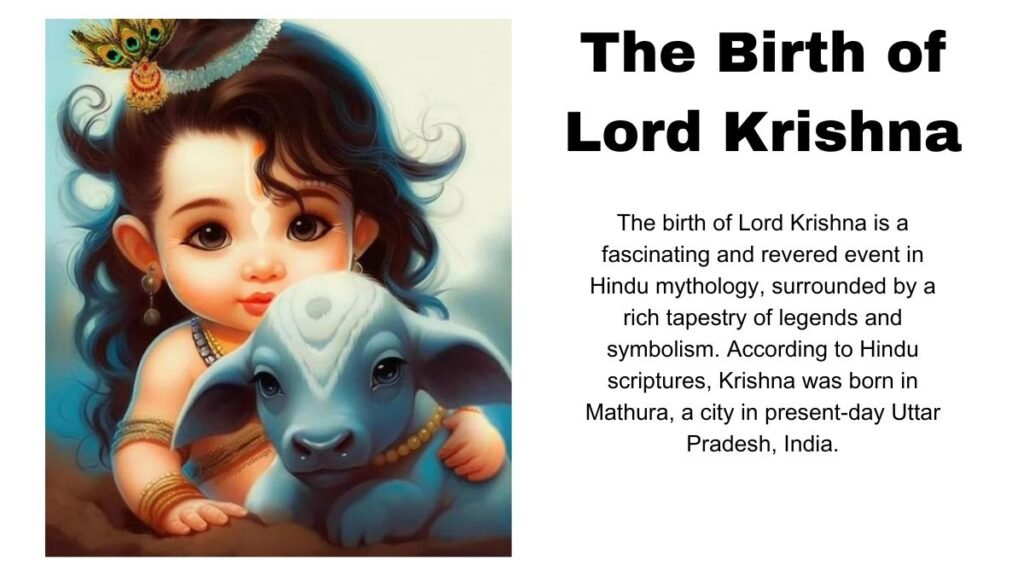
The birth of Lord Krishna is a fascinating and revered event in Hindu mythology, surrounded by a rich tapestry of legends and symbolism. According to Hindu scriptures, Krishna was born in Mathura, a city in present-day Uttar Pradesh, India. His birth is a central theme of the festival known as Krishna Janmashtami, celebrated with great enthusiasm and devotion by millions of Hindus across the world. Let’s delve into the details of this remarkable event:
The Divine Prophecy:
The story of Krishna’s birth begins with a prophecy. It is said that King Kansa, the tyrannical ruler of Mathura, was told by a divine voice that he would be killed by the eighth child born to his sister, Devaki, and her husband, Vasudeva. Frightened by this prediction, Kansa imprisoned Devaki and Vasudeva and resolved to kill each of their children as they were born.
The Imprisonment of Devaki and Vasudeva:
Devaki and Vasudeva were imprisoned in a dark and dingy dungeon, where they endured years of suffering at the hands of King Kansa. As Kansa heard about each birth, he would rush to the prison cell to kill the newborn child, depriving Devaki and Vasudeva of their offspring one by one.
The Divine Intervention:
It was during this time of distress and turmoil that Lord Krishna made his divine entry into the world. According to the Bhagavata Purana, at the moment of Krishna’s birth, the prison was miraculously illuminated, and the guards fell into a deep slumber. Simultaneously, the gates of the prison cell swung open, and Vasudeva, guided by divine intuition, took baby Krishna in his arms and embarked on a perilous journey to ensure the child’s safety.
The Miraculous Crossing of the Yamuna River:
As Vasudeva carried the infant Krishna through the stormy night, he reached the banks of the Yamuna River. The river was in full spate due to heavy rainfall. However, when Vasudeva placed Krishna on a leaf and held him aloft, the mighty Yamuna parted, allowing them to cross safely.
The Foster Parents – Yashoda and Nanda:
Vasudeva eventually reached the village of Gokul, where he exchanged baby Krishna with a baby girl born to Yashoda and Nanda, the cowherd couple. When he returned to the prison, he found the gates locked once again, and the guards still in a deep sleep, unaware of his absence. Kansa remained oblivious to the birth of Krishna.
The Significance of Krishna’s Birth:
The birth of Lord Krishna holds immense significance in Hinduism. It symbolizes the divine intervention to protect the righteous and defeat evil. Krishna’s life and teachings, as described in the Bhagavad Gita, provide profound spiritual guidance to devotees. His childhood antics, such as stealing butter and playing the flute, endear him to people as the mischievous and charming Lord.
Krishna’s birth is celebrated with great zeal on Krishna Janmashtami, with devotees observing fasts, singing devotional songs, and visiting temples. The midnight hour of Krishna’s birth is considered especially auspicious, marked by elaborate prayers and celebrations.
Rituals and Puja Vidhi
Krishna Janmashtami, the celebration of Lord Krishna’s birth, is marked by various rituals and puja (worship) ceremonies observed by devotees. These rituals may vary in detail and style across different regions of India, but the essence of devotion and celebration remains consistent. Here’s a detailed overview of the common rituals and puja vidhi associated with Krishna Janmashtami:
1. Fasting (Vrat): Many devotees fast on Krishna Janmashtami, refraining from consuming food and water until midnight when Lord Krishna is believed to have been born. This fast is observed to demonstrate devotion and self-discipline.
Some people opt for a partial fast, consuming only fruits, milk, and other light foods during the day.
2. Decoration of Home and Temples: Homes and temples are adorned with vibrant decorations, including colourful rangoli patterns at the entrance, flower garlands, and festive lighting. Images or idols of Lord Krishna, often as a child or an infant, are prominently displayed and decorated.
3. Bhajans and Kirtans: Devotees engage in singing devotional songs, bhajans, and kirtans dedicated to Lord Krishna. These songs are sung with great fervour and devotion, celebrating the divine qualities and exploits of Krishna. Musical instruments like the harmonium and dholak are commonly used during these singing sessions.
4. Abhishek (Bathing the Deity): The ceremonial bathing of Lord Krishna’s idol or image is an essential part of the Janmashtami puja. Devotees use various auspicious liquids for the abhishek, including milk, curd, ghee, honey, and water. After the abhishek, the deity is dressed in new, finely crafted clothes and adorned with jewellery, flowers, and garlands.
5. Preparing Special Offerings: Devotees prepare a variety of delicious sweets and dishes to offer to Lord Krishna. These offerings are known as “bhog” and typically include items like makhan (butter), Panchamrit (a mixture of milk, yoghurt, honey, sugar, and ghee), and various sweets like laddoos and kheer.
Freshly made jalebis, a favourite of Lord Krishna, is also offered.
6. Midnight Celebration (Nishita Puja): The most significant moment of Krishna Janmashtami is the midnight hour when Lord Krishna is believed to have been born. Temples and homes are filled with an atmosphere of anticipation and devotion. At midnight, the conch shell is blown to announce the birth of Lord Krishna. Devotees break their day-long fast and offer prayers, aarti, and bhog to the deity.
7. Dahi Handi (Pot of Curd): In Maharashtra and some other regions, a popular tradition involves forming human pyramids to reach and break a clay pot filled with curd or buttermilk. This reenacts Lord Krishna’s childhood pranks of stealing butter. The group that successfully breaks the pot is rewarded with prizes and accolades.
8. Recitation of Bhagavad Gita: In some temples, the entire Bhagavad Gita, a sacred scripture containing Lord Krishna’s teachings, is recited during the day as a mark of devotion and reverence.
9. Visiting Temples and Seeking Blessings: Devotees visit temples dedicated to Lord Krishna, offer prayers, and seek blessings for prosperity, spiritual growth, and protection from evil forces.
Shri Krishna Krishna Janmashtami Vrat Rules
- Rise early and take a bath.
- Wear fresh/clean clothes.
- Offer your prayers to the Sun God and other deities facing the East.
- Do Sankalpa (take a pledge that you will sincerely keep the vrat).
- Keep chanting the name of Shri Krishna (Naam Japa).
- Maintain celibacy.
- Donate food to the needy.
- You may feed a cow or a calf, or any other animal.
- On the day of Janmashtami, do not pluck Tulsi leaves from the plant at home.
- Do not smoke or consume alcohol.
Janmashtami Vrat – What to eat and what not to eat
- You may have fruits, milk, and coconut water.
- Keep yourself hydrated by drinking water or juices.
- Do not consume rice, wheat, or lentils in any form.
- Do not consume garlic, onions, or any other Tamasic food.
- Do not eat meat or fish.
Krishna Moola Mantra
OM Krishnaya Namah
Krishna Maha Mantra
Hare Krishna Hare Krishna Krishna Krishna Hare Hare
Hare Rama Hare Rama Rama Rama Hare Hare
Krishna Gayatri Mantra
OM Devaki Nandaya Vidmahe Vasudevaya Dheemahi Tanno Krishna Prachodayat
Krishna Mantra for success
OM Shri Krishnah Sharanam Mamah
Mahurat: Krishna Janmashtami on Monday, August 26, 2024
The auspicious festival of Krishna Janmashtami in the year 2024 holds special significance as it marks the 5250th birth anniversary of Lord Krishna, a celebration of profound spiritual and cultural importance. Devotees eagerly await this day to honour and commemorate the birth of their beloved Lord. Here are the mahurat (auspicious timings) and significant moments associated with Krishna Janmashtami on Monday, August 26, 2024:
Ashtami Tithi (Eighth Lunar Day):
Start – August 25 | 6:09 PM in (United States)
This marks the commencement of the eighth lunar day, which is dedicated to Lord Krishna and is considered highly auspicious.
Ashtami Tithi Ends:
Ends – August 26 | 4:49 PM in (United States)
These timings are crucial for planning the puja (worship) and celebrations are based on UAE timing. Devotees typically fast throughout the day, engage in singing devotional songs, and prepare special offerings for Lord Krishna. As the clock approaches midnight, the anticipation and excitement among devotees reach their peak, culminating in the joyous celebration of Lord Krishna’s birth during the Nishita Puja.


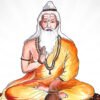
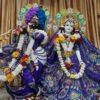









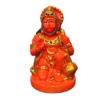
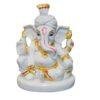

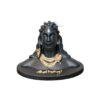


Add comment